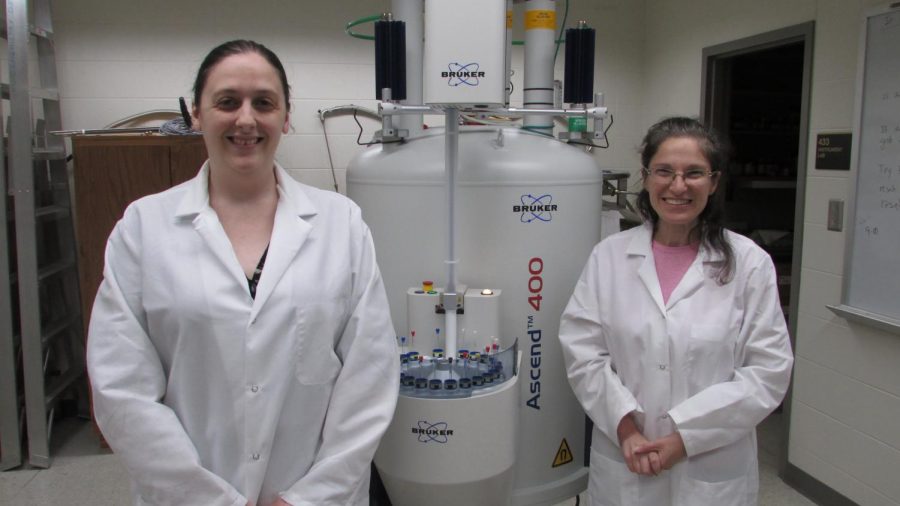Study explores methods to reduce CO2 emissions
UWO senior Kara Gillette works with Assistant Professor of Chemistry Sheri Lense on CO2 conversion.
September 26, 2019
Over the last decade, it’s no secret that the release of carbon dioxide and other toxic chemicals into the atmosphere has greatly contributed to the phenomenon known as climate change. However, there has yet to be a research study that poses a quality solution to this global crisis.
UW Oshkosh Assistant Professor of Chemistry Sheri Lense and UWO senior chemistry major Kara Gillette have been collaborating on a foundational research study that provides one possible solution to this issue. Specifically, their research seeks to reduce the amount of CO2 released into the atmosphere by converting it into more sustainable fuels and products.
Currently, when CO2 is captured it produces a waste product that is essentially useless, Gillette said. It gives many businesses little incentive to go green unless they’re more environmentally conscious.
“It’s a major expense with no return,” Gillette said.
Through their research, the pair has discovered that CO2 can be converted into materials that companies may find attractive, such as plastic.
“The hope would be that if we have something like this available in the future that it would provide an economic incentive to capture that carbon dioxide as well as environmental impact,” Gillette said.
According to Lense and Gillette, in order to obtain these sustainable fuels, you first have to convert CO2 into carbon monoxide, or CO.
“Carbon monoxide is toxic, but it can be more easily converted into what are called value-added chemicals, so those are going to be chemicals that you can sell, that you can use,” Lense said. “Anything from fuels to plastics to even medicines.”
However, getting from CO2 to CO is a challenge.
Lense said compared to CO, CO2 is fairly stable and lower in energy, meaning it takes extra energy to get from CO2 to CO. Gillette compares it to pushing a car. Initially, getting the car to roll is a lot more work than when it’s already rolling.
To address this issue, the second part of their research was to find adequate catalysts that would help reduce the amount of energy needed to create this reaction. Lense called this an “alternative pathway.”
Gillette said the process involved catalytic synthesis.
“Synthesis in chemistry is a lot like building with Legos in the dark,” she said. “You kind of have an idea of what you’ve made, but you have to use something, some external techniques to figure out ‘what is it?’”
Over the course of the project, the pair have received several grants to aid them in their study including the Undergraduate Student/Faculty Collaborative Research Grant from UWO. They also received funds from the American Chemical Society and the Petroleum Research Fund. Lense has been working on the project for five years, with Gillette joining the project in 2016.
“It’s been a really great experience for me as a student,” Gillette said. “I think it’s given me a lot of practice in terms of job skills, troubleshooting and working through problems.”
Lense and Gillette said their next steps in the project will be to disseminate the data and get the results published in one of the many scholarly chemistry journals that exist. While a lot of the research the pair has done is only fundamental, it will provide a pathway for other researchers to further develop a productive catalyst in the future.














